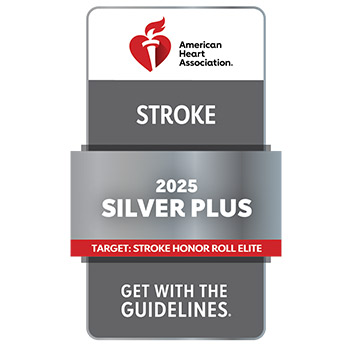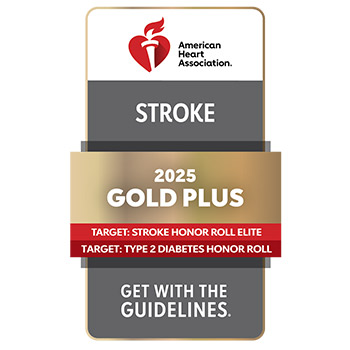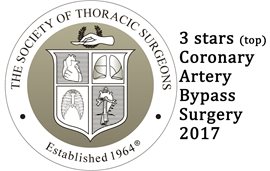
Quality Impacts
Quality Impacts
A Message From Dr. Tom Utecht,
Chief Medical Officer
 At Community Medical Centers, our goal is to take exceptional care of our patients. Your safety and well-being is our number one priority. We are always looking for ways to improve and eliminate any preventable risks to our patients. That’s why we’ve built a culture of teamwork and accountability to constantly improve our systems and processes to reduce risk to patients, research and develop best practices, and create the most positive patient experience.
At Community Medical Centers, our goal is to take exceptional care of our patients. Your safety and well-being is our number one priority. We are always looking for ways to improve and eliminate any preventable risks to our patients. That’s why we’ve built a culture of teamwork and accountability to constantly improve our systems and processes to reduce risk to patients, research and develop best practices, and create the most positive patient experience.
I believe the first step of improving quality and safety is transparency with our patients, our employees, and our affiliated physicians. In early 2018, the California Hospital Association, in partnership with the Hospital Quality Institute, launched the Advancing Transparency in Hospital Quality Data project. We’re proud to join this statewide initiative to improve transparency between hospitals and the communities they serve.
We know you have choices for your healthcare provider. And we want you to feel confident that when you choose the Valley’s largest and most complete healthcare network, you’ll receive excellent care — for you and your entire family.
Clovis Community Medical Center
Outcome Measures | CLABSI (Lower is better) | Colon SSI (Lower is better) | NTSV (Lower is better) | Sepsis Mortality (Lower is better) | 30-Day Readmission (Lower is better) |
| Clovis Community | 1.11 | 1.60 | 32.60 | 26.81 | 15.10 |
| California Level | 0.89 | 0.88 | 23.90 | 18.97 | 14.94 |
| National Level | 0.97 | 0.86 | 26.30 | 15.00 | 15.00 |
| Measure Period | 04/01/21-03/31/22 | 04/01/21-03/31/22 | 01/01/21-12/31/21 | 01/01/21-12/31/21 | 07/01/20-06/30/21 |
These quality measures are reported by the Hospital Quality Institute.
This hospital has a Maternity Safety Program in place.
This hospital has a Sepsis Protocol in place.
This hospital has a Respiratory Monitoring Program in place.
Awards & Distinctions
Clovis Community Medical Center is recognized as a Primary Stroke Center by The Joint Commission in collaboration with the American Heart Association/American Stroke Association. Primary Stroke Centers have dedicated stroke teams that can stabilize and provide emergency care for patients with acute strokes. The certification is designed for hospitals, like Clovis Community, that provide the critical elements to achieve long-term success in improving outcomes.


Community Regional Medical Center
| Outcome Measures | CLABSI (Lower is better) | Colon SSI (Lower is better) | NTSV (Lower is better) | Sepsis Mortality (Lower is better) | 30-Day Readmission (Lower is better) |
| Community Regional | 1.19 | 1.08 | 25.30 | 25.67 | 15.50 |
| California Level | 0.89 | 0.88 | 23.90 | 18.97 | 14.94 |
| National Level | 0.97 | 0.86 | 26.30 | 15.00 | 15.00 |
| Measure Period | 04/01/21-03/31/22 | 04/01/21-03/31/22 | 01/01/21-12/31/21 | 01/01/21-12/31/21 | 07/01/20-06/30/21 |
These quality measures are reported by the Hospital Quality Institute and includes combined data for Community Regional Medical Center and Fresno Heart & Surgical Hospital as both facilities are under the same license.
This hospital has a Maternity Safety Program in place.
This hospital has a Sepsis Protocol in place.
This hospital has a Respiratory Monitoring Program in place.
Stroke Program Performance Measurements
As an Advanced Comprehensive Stroke Center, Community Regional is committed to providing exceptional stroke care to reduce brain damage and permanent disability. We track various quality measures and look at the outcomes of our patients to ensure we are delivering effective stroke care.
The metrics below demonstrate our effectiveness in ensuring timely restoration of blood flow to the brain in patients experiencing a stroke due to a blood clot. Our current outcomes for Door to Needle (DTN) and Door to Puncture (DTP) times are trending better than the national goals and the Substantial Reperfusion Rate is trending better than the 90th percentile benchmark compared to other Certified Comprehensive Stroke Centers.
Measure | Description | Our Result | American Stroke Association National Goal | Community Regional Medical Center Rating |
Door to Needle | The time from arrival at our emergency department to receiving blood flow restoring medication | 46 minutes (median) | <60 minutes |
Better |
Door to Puncture | The time from arrival at our emergency department to the start of the clot retrieval procedure | 71 minutes (median) | <90 minutes |
Better |
Data from January to June 2025
Measure | Description | Our Result | Other Certified Comprehensive Stroke Centers | Community Regional Medical Center Rating |
Substantial Reperfusion Rate | The percent of patients with successful reperfusion with mechanical thrombectomy | 97.5% | 96.7% - 90th percentile 87.6% - 50th percentile
| Better than the 90th percentile |
Data from January to June 2025
Awards & Distinctions



Fresno Heart & Surgical Hospital
| Outcome Measures | CLABSI (Lower is better) | Colon SSI (Lower is better) | NTSV (Lower is better) | Sepsis Mortality (Lower is better) | 30-Day Readmission (Lower is better) |
| Fresno Heart | 2.17 | 0.59 | N/A | 13.19 | 12.56 |
| California Level | 0.89 | 0.88 | 23.90 | 18.97 | 14.94 |
| National Level | 0.97 | 0.86 | 26.30 | 15.00 | 15.00 |
| Measure Period | 04/01/21-03/31/22 | 04/01/21-03/31/22 | 01/01/21-12/31/21 | 01/01/21-12/31/21 | 07/01/20-06/30/21 |
This data is reported by the Community Medical Centers' Quality division based on the quality measure reporting standards set by the Hospital Quality Institute.
This hospital has a Sepsis Protocol in place
This hospital has a Respiratory Monitoring Program in place
Awards & Distinctions

![]()
Measure Definitions
CLABSI — Central Line Associated Blood Stream Infection: A serious infection that occurs when germs enter the bloodstream through a central line. A central line is a special intravenous catheter (IV) that allows access to a major vein close to the heart and can stay in place for weeks or months. The value shown above is a Standardized Infection Ratio (SIR), which is the ratio of observed-to-expected infections during the measure period. SIRs below 1.00 indicate that the observed number of infections during the measure period was lower than would be expected under normal conditions, whereas values above 1.00 indicate that the observed number of infections was higher than expected. Limitation: In the calculation of the Standardized Infection Ratio (SIR), the CDC adjusts for differences between hospitals. However, patient risk factors are not taken into account. These patient-specific variables (e.g., poor skin integrity, immunosuppression) can increase the risk of developing a central line infection. Hence, the SIR for hospitals that care for more medically complex or immunosuppressed patients may not be adequately adjusted to account for those patient-specific risk factors.
Colon SSI — Colon Surgical Site Infection: An infection (usually bacteria) that occurs after a person has colorectal surgery that occurs at the body site where the surgery took place. While some involve only the skin, others are more serious and can involve tissues under the skin, organs, or implanted material. The value shown above is a Standardized Infection Ratio (SIR), which is the ratio of observed-to-expected infections during the measure period. SIRs below 1.00 indicate that the observed number of infections during the measure period was lower than would be expected under normal conditions, whereas values above 1.00 indicate that the observed number of infections was higher than expected. Limitation: Some, but not all patient-specific risk factors are included in the adjustment of the SIR for these types of infections. However, not all relevant risk factors are included (e.g., trauma, emergency procedures). Hence, the SIRs for hospitals performing more complex procedures or with larger volumes of trauma or emergency procedures may not be adequately adjusted to account for those patient-specific risk factors.
NTSV — Nulliparous, Term, Singleton, Vertex Cesarean Birth Rate: The percentage of cesarean (surgical) births among first-time mothers who are at least 37 weeks pregnant with one baby in a head down position (not breech or transverse). Lower values indicate that fewer cesareans were performed in the hospital among primarily low risk, first-time mothers. Limitation: NTSV rates do not take into account certain obstetric conditions, such as placenta previa, that may make Cesarean delivery the safer route for both mother and infant.
Sepsis Mortality: Percent of patients, with a severe infection, who die in the hospital. Most sepsis cases (over 90%) start outside the hospital. Lower percentage of death indicates better survival. Limitation: Use of discharge/administrative data is limiting since such data has lower specificity for diagnoses than clinical data. In addition, without risk adjustment for differences in patient-specific factors, comparing rates among hospitals is difficult.
30-day Readmission — Hospital-wide All-Cause 30-day Unplanned Readmission Rate: The percentage of patients who were unexpectedly readmitted within 30 days of discharge from the hospital for any reason. Lower values indicate that fewer cases were unexpectedly readmitted after discharge. Limitations: Some, but not all patient-specific risk factors are included in the adjustment of the readmission rate. However, not all relevant risk factors are included (e.g., trauma, emergency procedures).
Maternity Safety Program: A maternity safety program provides a coordinated approach and emergency response to risks associated with pregnancy and childbirth.
Sepsis Protocol: A sepsis protocol provides guidance for a coordinated approach to identification and treatment of an infection and inflammatory response which is present throughout the body.
Respiratory Monitoring Program: Respiratory monitoring provides guidance for assessment of risk of respiratory depression, and includes continuous monitoring of breathing and functioning of the lungs and circulatory systems when indicated.
Contact Us
Should any patient safety or quality of care concern arise, we encourage you to speak with any member of our management team. Our customer service representatives can direct you to the appropriate responsible person who will work with you to resolve the issue.
- Clovis Community (559) 324-4000
- Community Regional (559) 459–6000
- Fresno Heart & Surgical (559) 433-8000
If your concerns cannot be resolved through this process, you may also contact The Joint Commission’s Office of Quality Monitoring to register your complaint.
The Joint Commission Complaint Hotline is 1-800-994-6610. The Joint Commission Complaint email address is complaint@jointcommission.org. For more information, visit www.jointcommission.org.
We use cookies and other tools to optimize and enhance your experience on our website. View our Privacy Policy.

